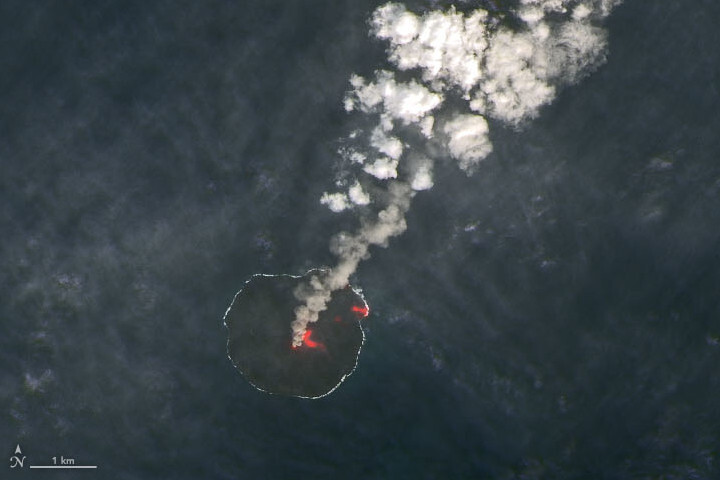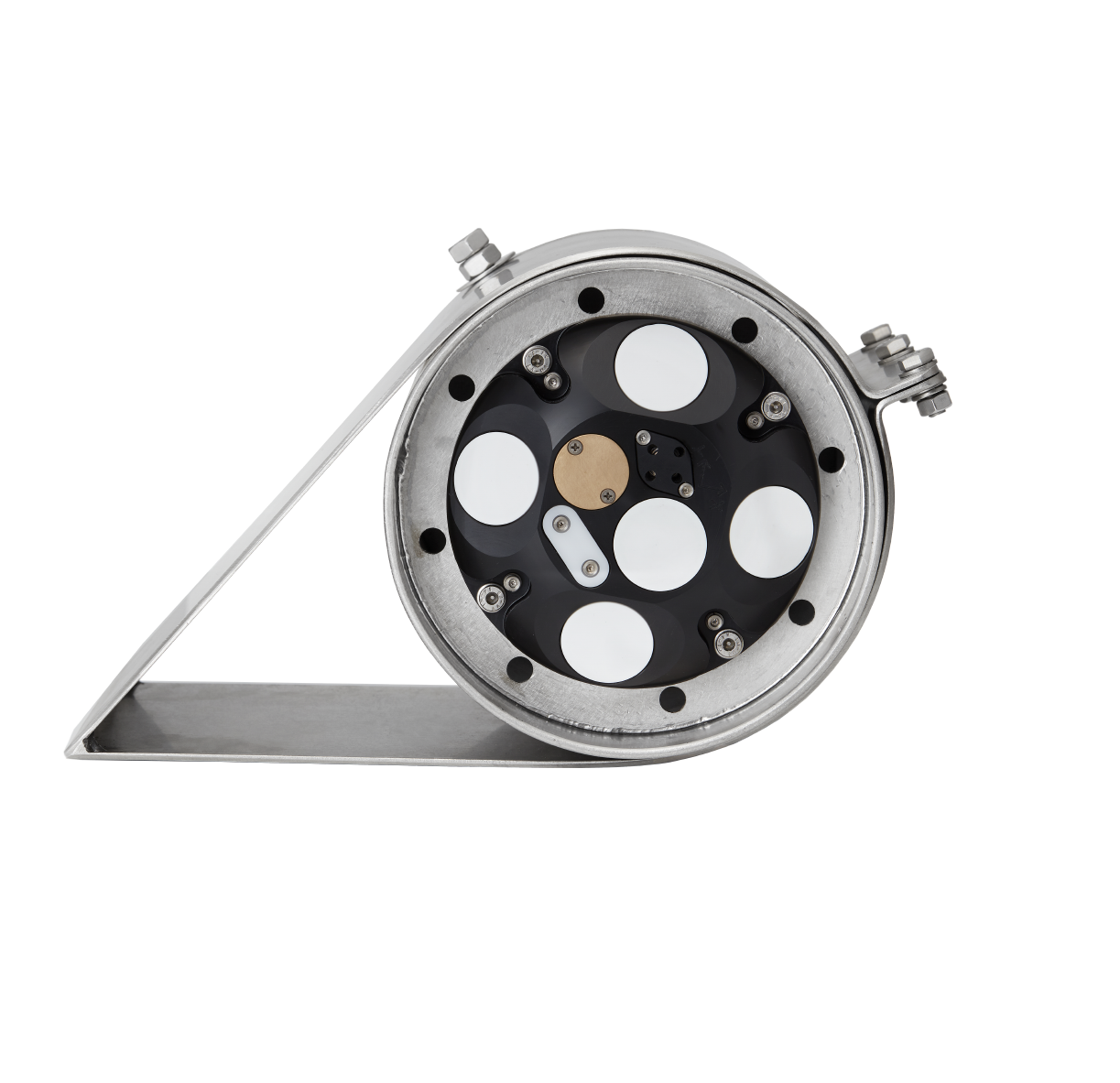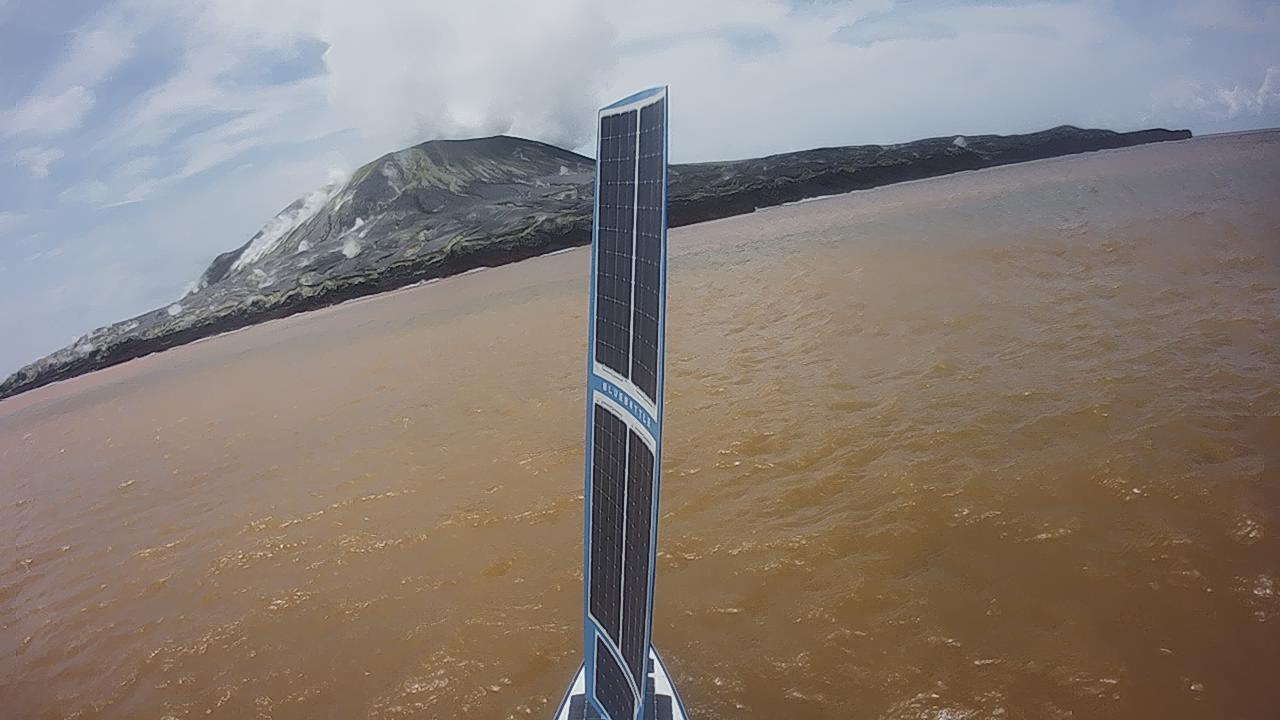
Safely collecting ocean current data near active island volcanoes with a USV
- User stories
Synopsis
Challenge
The Japanese government wanted to conduct a survey of ocean currents near active volcanoes. The area is too dangerous and unpredictable for crewed vessels to safely operate.
Solution
Australian company Ocius equipped their “Bluebottle” Uncrewed Surface Vehicle (USV) with Nortek’s vessel-mounted current profiling system, which has been tailored to use on USVs.
Benefit
The Bluebottle USV was able to safely collect ocean current data that will provide valuable insights about these volcanoes, their formation and the risks associated with them.
Australian company Ocius manufactures Uncrewed Surface Vehicles (USVs) dubbed Bluebottles. These vehicles are designed to carry as many sensors as possible to maximize data collection during survey missions, powering themselves with 100 per cent renewable energy – including wind, wave and solar power.
Autonomous vehicles, like these USVs, are often employed to perform tasks unsafe for human workers. USVs are the optimal tool for performing hydrographic surveys without incurring any human risks.
“The use of USV's is emerging,” says Herman Huitema, VM Business Development Manager at Nortek. “Nortek collaborates closely with USV manufacturers to optimize the ADCP integration on USV's with aim to provide the end user the best possible data.”
One such mission recently performed by Ocius’ Bluebottles USV was surveying a large swath of ocean near an active volcano in Japan.
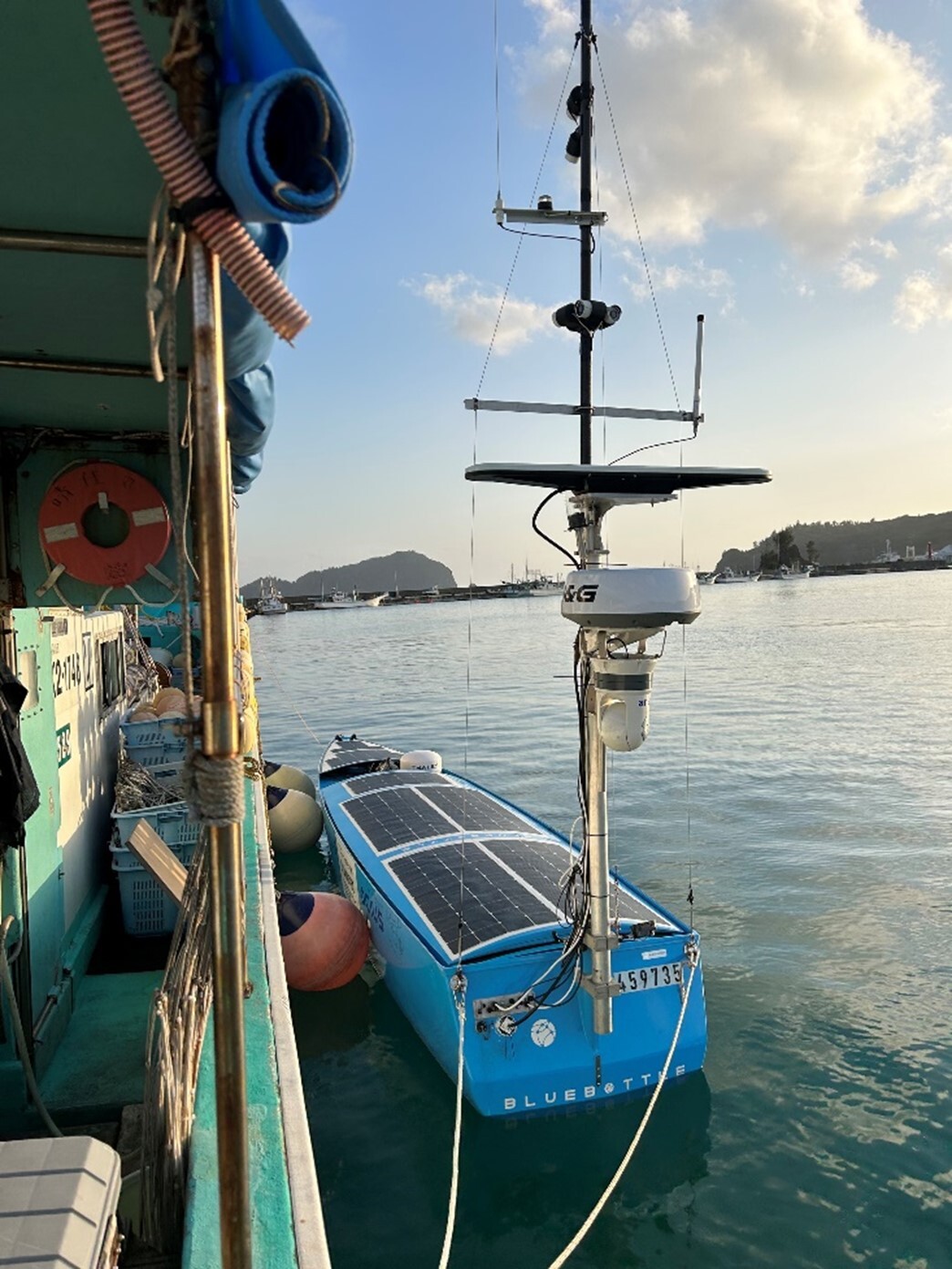
Using USVs to perform dangerous research missions at sea
The Japanese Agency for Marine and Earth Science approached Ocius about collecting oceanographic data from the Bluebottle USVs in an area where multiple active volcanoes are known; specifically, around the Nishinoshima Volcano in the Ogasawara Islands.
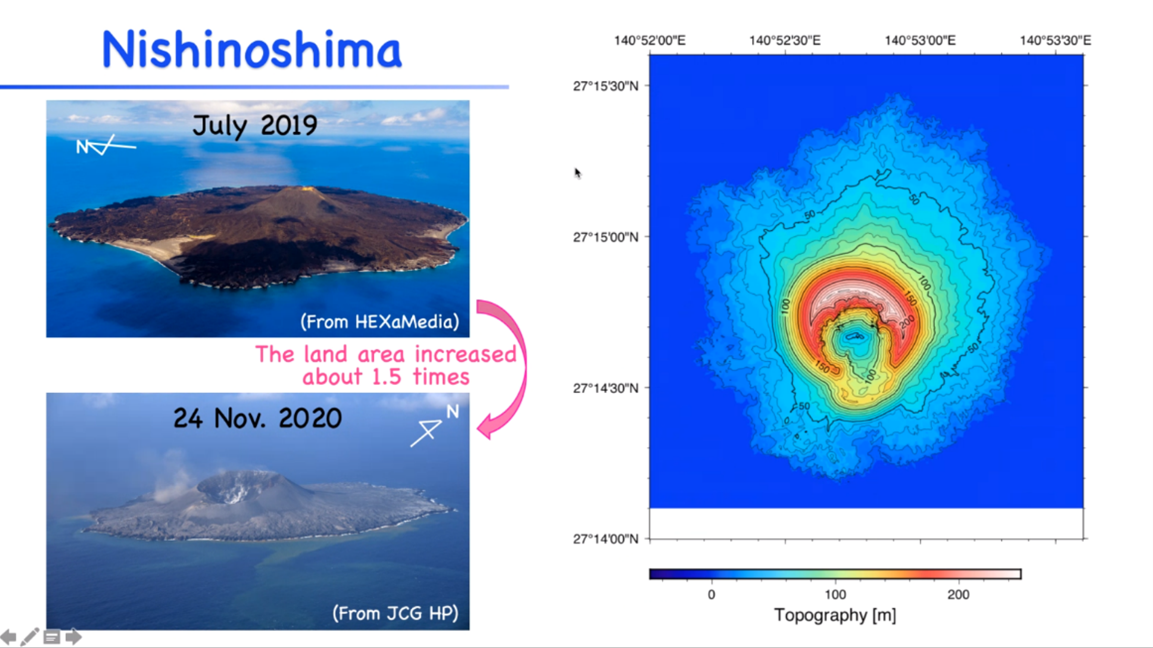
“The reason they wanted to map the area by these volcanoes is twofold: one, from the science aspect, it’s the first time they’re able to study an undersea real-life volcano forming,” says Nick Rozenauers, Manager at Ocius.
“But also, for the Japanese nation to understand how a volcano is forming and any risks associated with that.”
However, because the volcanoes are active, using a crewed vessel to perform the survey is unsafe and not permitted.
“It’s too dangerous for ships to go anywhere near [the volcanoes] because they are live,” explains Rozenauers. “There’s a perimeter around them where no vessels are allowed to go.”
Instead, a Bluebottle USV would be sent out to collect information near the subsea volcano.
A current profiler for USVs requiring low power consumption
The Bluebottle is designed to handle a maximum payload, with data collection for this mission including above-the-surface variables like atmospheric pressure, temperature, wind speed, wind direction, as well as information about the seawater like pH and turbidity. The USV also collected images of the area.
“This is where the vehicle’s big payload capacity comes in handy,” says Rozenauers.
In addition to all of this, the Bluebottle USV needed to collect current profiles around the volcano. Nortek’s 100 kHz vessel-mounted “VM Ocean” ADCP system can be specifically tailored to be installed on a USV for current surveys like this one and made an ideal choice for this application.
“We chose the Nortek VM system because of the low power drawing and the compact size,” says Rozenauers.
According to Rozenauers, low power consumption is one of the biggest considerations for a USV manufacturer. The Bluebottle USVs run entirely on power generated from the solar panels on their sails. Any sensors on board must require low enough amounts of power so that all other functions of the USV can still operate from the single renewable power source.
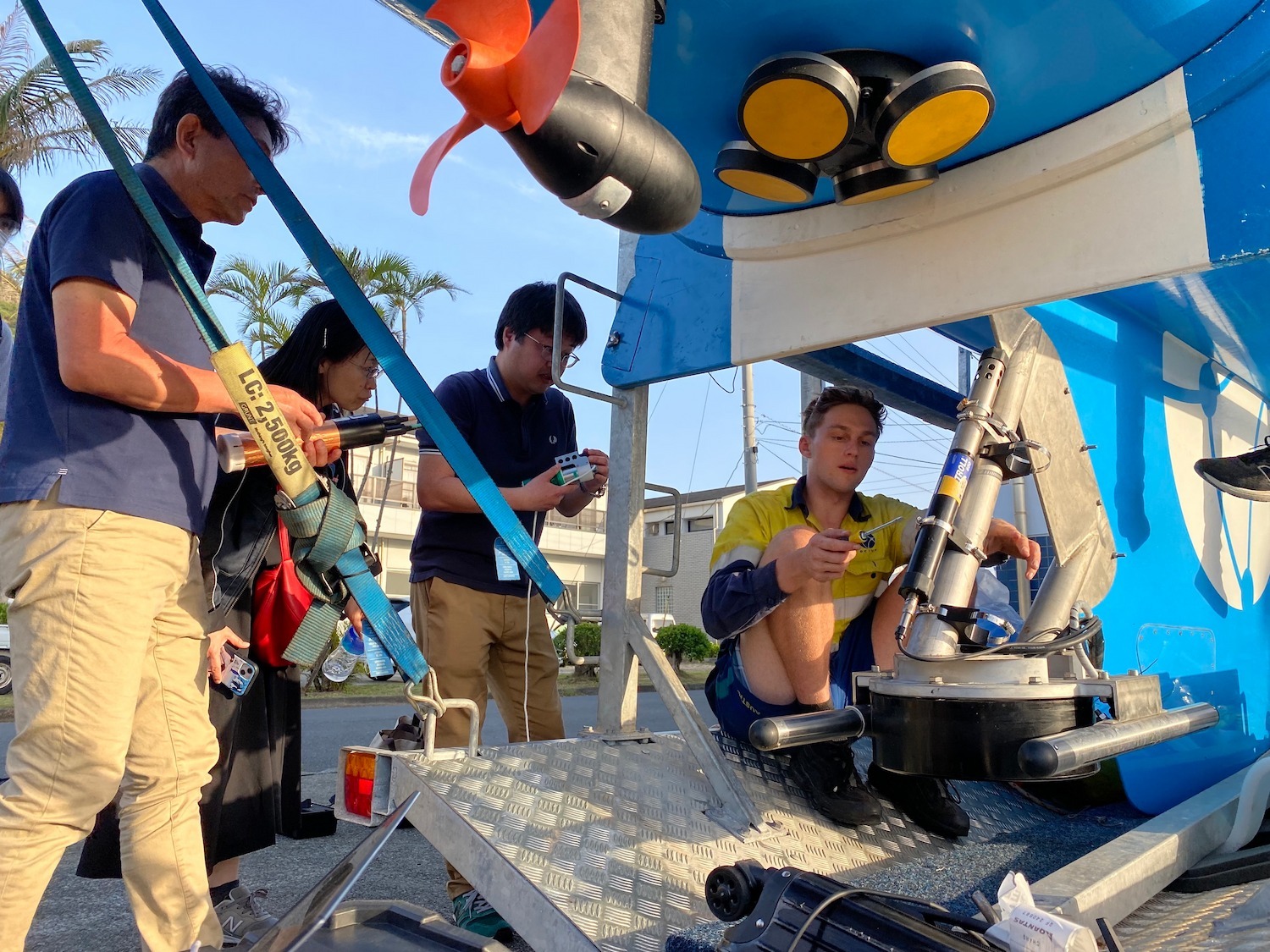
The Nortek VM system offered the team a robust current profiling solution with the required low power consumption. Specifically, the team used a Signature100 ADCP, which offers a profiling range of 300-400 m when used as part of the VM Ocean package, ideal for the Ocius team’s goals of profiling up to 300 m depth near the volcano. The 100kHz frequency was also chosen to avoid interference with other sensors onboard the USV.
The USV-specific version of the VM system has fewer onboard components since no crew members will need to see the data onboard in real time, reducing the system’s required power and payload on the vehicle.
“The building blocks the from the VM Ocean package allow VM Ocean users to be versatile,” says Huitema.
“It’s easy to convert the system from standalone, online on manned vessels to being operated remotely from USVs.”
The ability to tailor the system to the application can also aid in quality data collection.
“In this case, Ocius choose to fit the ADCP with an optional AHRS which significantly improves the tilt corrections on the current profile data when using dynamic platforms such as USVs," adds Huitema.
Advancing volcano research with uncrewed vehicles to avoid human risk
The data from the Bluebottle’s various sensors, including the ADCP system, verified existing hypotheses about the environment around the volcano.
“The topography of volcanic mound was quite steep, the ocean was discolored, and it was hotter around the volcano, but that’s kind of expected,” says Rozenauers.
“These were all hypotheses that were verified by the data we collected. We better understand now what’s going on.”
According to Rozenauers, the vehicle transited to the volcano autonomously, only requiring intermittent progress checks from human operators. Once in the unfamiliar territory near the volcano, a human pilot operated the USV at all times to mitigate the risks of operating in the unmapped territory. Intervention from a human pilot ensured that the vehicle would not run aground near the volcano.

A similar volcano off the coast of Japan erupted in November 2023, creating a small island. The unpredictable nature of such dangerous events and environments makes studying them (using uncrewed systems) all the more important, as millions of people across the world live near active volcanoes.
